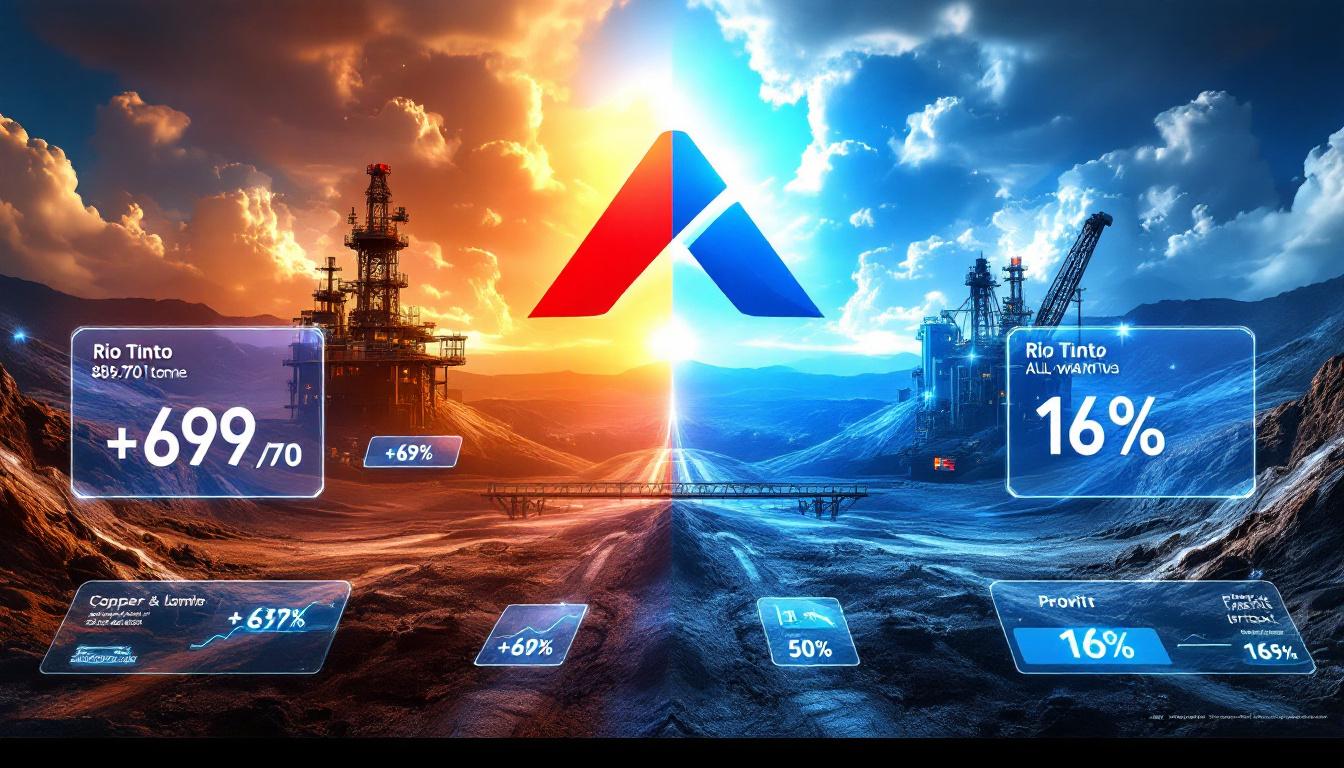Tianjin Zinc Market Analysis: Trends, Pricing Dynamics, and Trading Patterns
The Tianjin zinc futures market presents a complex landscape of pricing dynamics, brand differentials, and regional variations that influence trading decisions. Current market conditions reflect broader economic factors alongside industry-specific developments that shape both spot and futures activities. This analysis examines the latest trends, pricing structures, and trading patterns to provide a comprehensive understanding of this important metals market.
What Is Happening in the Tianjin Zinc Futures Market?
The Tianjin zinc futures market is currently experiencing fluctuating trends with notably weakened trading volumes, according to the latest data from Shanghai Metal Market (SMM). This market dynamic reflects both broader economic conditions and specific factors affecting zinc trading activity in northern China.
Current Price Structures and Market Positioning
As of July 2025, the Tianjin zinc market shows a stratified pricing structure across different grades and brands:
- #0 Zinc Ingot: Trading between 21,990-22,210 yuan/mt
- Zijin Brand: Commanding 22,020-22,220 yuan/mt
- #1 Zinc Ingot: Available at 21,870-22,050 yuan/mt
- Huludao Brand: Positioned at a significant premium of 25,520 yuan/mt
This price differentiation highlights the quality-based segmentation that characterizes the zinc market, with higher-grade products maintaining substantial premiums even during periods of market uncertainty.
Premium Structures Against Futures Contracts
The relationship between spot prices and futures contracts provides critical insights into market expectations:
- Ordinary #0 zinc maintains a premium of 0-50 yuan/mt against the August 2025 (2508) contract
- Zijin brand commands a more consistent premium of 30-60 yuan/mt against the same contract
- The Tianjin market as a whole trades at approximately 60 yuan/mt discount compared to Shanghai
These premium structures suggest that while overall market sentiment remains cautious, high-quality zinc brands continue to maintain their value proposition for industrial users with specific quality requirements.
How Are Different Zinc Brands Performing in the Market?
The Tianjin zinc market exhibits notable variations between different brands and grades, creating a tiered market structure that rewards quality and consistency. This brand-specific analysis reveals important nuances in pricing strategy and market positioning.
Brand-Specific Quotations and Premium Analysis
Current premium structures against the August 2025 futures contract reveal brand-specific market positioning:
- Xikuang: Maintains a stable premium of 40 yuan/mt
- Chihong: Trades at a variable premium of 0-40 yuan/mt
- Xinzi: Commands a premium of 40-50 yuan/mt
- Zijin: As a recognized high-end brand, sustains a premium of 30-60 yuan/mt
These premiums represent the market's quality assessment, with the wider premium ranges for certain brands reflecting their broader acceptance across various industrial applications.
Quality Differentiation as a Price Driver
The substantial price gap between standard grades and specialty brands like Huludao (trading at 25,520 yuan/mt) demonstrates that quality considerations remain paramount even during periods of market uncertainty. This premium structure persists despite the overall fluctuating trend in the steel and iron challenges in the futures market.
"The stable premium structure across different brands suggests that quality differentiation remains a fundamental market driver even when overall transaction volumes are weakened," notes the SMM market report.
This resilience in premium structures indicates that industrial users maintain strict quality requirements regardless of short-term market conditions, creating a relatively stable tier system within the broader zinc market.
What Factors Are Influencing Current Market Conditions?
Several interconnected factors are shaping the current Tianjin zinc market dynamics, creating a complex environment for both traders and industrial buyers. Understanding these forces provides critical context for market participants.
Demand-Side Constraints
The current market is experiencing notable demand-side limitations:
- Downstream buyers are showing markedly low enthusiasm for procurement
- Industrial users' willingness to replenish stocks has weakened significantly
- Overall market transactions have declined, reducing market liquidity
- Trading activity is increasingly dominated by professional traders rather than end-users
This demand-side weakness suggests potential concerns about industrial production levels or broader economic uncertainty affecting zinc-consuming sectors such as galvanizing, die-casting, and brass manufacturing.
Supply-Side Response Patterns
On the supply side, market participants are adopting measured strategies:
- Traders are maintaining relatively stable quotations despite the weak demand environment
- Consistent premium structures across different brands indicate disciplined pricing
- The fluctuating futures market is creating a challenging environment for forward planning
- Regional price differences between Tianjin and Shanghai markets persist at around 60 yuan/mt
The stable quotations from traders despite weakened demand suggest they anticipate eventual market improvement, choosing to maintain price discipline rather than chase limited current transactions with aggressive discounting.
How Does the Tianjin Zinc Market Compare to Other Regional Markets?
Understanding the Tianjin zinc futures market requires contextualizing it within China's broader metals trading landscape, particularly in comparison to other major trading hubs like Shanghai. These regional differences create both challenges and opportunities for market participants.
Regional Price Differentials
The most notable regional characteristic is Tianjin's discount position:
- Tianjin zinc currently trades at approximately 60 yuan/mt discount compared to Shanghai
- This discount reflects a combination of transportation costs, regional demand variations, and inventory positions
- The persistent nature of this discount suggests structural rather than temporary factors
- Market participants regularly factor this differential into arbitrage decisions and regional procurement strategies
The 60 yuan/mt discount represents a significant consideration for large-volume purchasers who may find meaningful cost advantages by sourcing from Tianjin rather than eastern markets, particularly for brands with consistent quality across regions.
Regional Trading Activity Comparison
Beyond price differentials, trading patterns also differ notably between regions:
- Tianjin is experiencing weakened overall transaction volume compared to historical norms
- Trading activity in Tianjin is currently dominated by professional traders rather than end-users
- Market liquidity appears reduced compared to more active trading hubs
- The impact of regional industrial activity creates varying demand patterns across China metal demand trends
These regional variations highlight the importance of local market knowledge and the dangers of applying national-level assumptions to specific trading hubs like Tianjin.
What Are the Technical Indicators for Zinc Futures Trading?
Technical analysis provides valuable context for understanding the Tianjin zinc futures market's current trajectory and potential future movements. While market participants employ various technical approaches, several key indicators stand out.
Price Movement Patterns
Current price action in the Tianjin zinc futures market shows several noteworthy characteristics:
- The market maintains a fluctuating trend without establishing a clear directional bias
- Price movements for premium brands like Zijin encounter resistance around the 22,200 yuan/mt level
- Standard grades like #1 zinc find support near the 21,900 yuan/mt threshold
- The narrowing trading ranges suggest a potential consolidation phase forming in the market
These technical patterns indicate a market seeking direction, with neither bulls nor bears gaining decisive control in the current environment.
Volume and Liquidity Indicators
Beyond price movements, trading volume provides critical insight into market conviction:
- Declining trading volumes suggest widespread market caution among participants
- Reduced market participation from downstream buyers limits organic demand support
- Trading activity is increasingly concentrated among professional traders
- The combination of price fluctuations and thin market depth creates potential for increased volatility
The dominance of trader-driven activity rather than end-user procurement creates a technically vulnerable market that could experience exaggerated price movements if external catalysts emerge.
How Are Industrial Buyers Responding to Current Market Conditions?
The behavior of industrial zinc consumers provides critical insights into market sentiment and future demand expectations, which ultimately influence price direction. Current patterns suggest a cautious approach from the manufacturing sector.
Procurement Strategy Adjustments
Industrial buyers are demonstrating notable restraint in their purchasing behavior:
- Downstream manufacturers show persistently low enthusiasm for new procurement
- Inventory replenishment activities have decreased significantly
- Purchasing departments are adopting increasingly cautious commodity trading strategies
- Spot market transactions are preferred over forward commitments in the current environment
This conservative procurement approach suggests industrial buyers may be concerned about their own order books or anticipate potential price decreases that would reward patience rather than aggressive stockpiling.
Industrial Demand Outlook Indicators
Several factors point to an uncertain industrial demand environment:
- Current procurement patterns suggest potential weakening in industrial zinc consumption
- Manufacturing sector trends may be influencing purchasing decisions
- Seasonal factors could be affecting normal purchasing patterns
- A wait-and-see approach dominates buyer behavior, limiting market activity
The reduced willingness to rebuild inventories represents a particularly important signal, as it suggests industrial buyers lack confidence in near-term production requirements that would normally drive regular restocking cycles.
What's the Outlook for the Tianjin Zinc Market?
Based on current market conditions and emerging trends, several potential scenarios could unfold in the Tianjin zinc futures market in the near to medium term. While precise predictions remain challenging in fluctuating markets, certain directional indicators provide guidance.
Short-Term Price Projection Factors
Several factors will likely influence price development in coming weeks:
- The market appears positioned for continued price fluctuation within established ranges
- Limited upside potential exists without improved downstream demand fundamentals
- Brand premiums may face compression if weak demand persists for an extended period
- The Tianjin-Shanghai market spread is likely to maintain around the 60 yuan/mt level
These projections suggest a rangebound market in the near term, with breakout potential contingent on either significant demand improvement or unexpected supply disruptions.
Market Sentiment Analysis
Current positioning by market participants offers additional insight:
- Trader activity suggests a generally cautious outlook for near-term price movement
- Limited speculative positioning indicates low conviction about directional opportunities
- Professional traders currently dominate transactions, suggesting tactical rather than strategic activity
- Reduced market liquidity creates potential for volatility despite the generally range-bound price action
This sentiment profile points to a market in transitional phase, with participants awaiting clearer directional signals before committing to more aggressive positioning. Many investors are also monitoring gold market analysis to understand broader precious metals trends that might affect base metals.
FAQ: Tianjin Zinc Market Essentials
What are the main zinc grades traded in the Tianjin market?
The Tianjin market primarily trades several zinc grades and brands, each with distinct pricing and applications:
- #0 zinc ingot: The standard high-grade zinc specification
- #1 zinc ingot: A secondary grade with slightly lower purity requirements
- Specialty brands: Including Zijin, Xikuang, Chihong, Xinzi, and Huludao
Each grade commands different pricing based on purity levels, consistency of quality, and suitability for specific industrial applications like galvanizing, die-casting, or brass production.
How do Tianjin zinc prices compare to the Shanghai market?
The Tianjin zinc market consistently trades at a discount to Shanghai prices:
- Current discount: Approximately 60 yuan/mt below Shanghai prices
- This regional differential reflects several factors including transportation costs, local supply-demand dynamics, and regional industrial activity levels
- Large volume buyers often factor this discount into procurement strategies
- The differential creates potential arbitrage opportunities for traders with multi-regional operations
Understanding this regional price relationship is essential for cost-effective procurement planning and price forecast insights.
What factors are currently suppressing buyer activity in the Tianjin zinc market?
Several factors contribute to the current low procurement enthusiasm:
- Uncertainty about industrial demand outlook in zinc-consuming sectors
- Fluctuating futures market conditions creating planning challenges
- Potential concerns about broader economic conditions affecting manufacturing
- Seasonal factors potentially influencing normal purchasing patterns
This combination of factors has led downstream buyers to adopt a conservative approach, limiting stock replenishment and focusing on immediate requirements rather than forward inventory building.
How do premium brands like Zijin compare to standard zinc grades?
Premium brands maintain significant advantages over standard grades:
- Zijin typically commands a premium of 30-60 yuan/mt over standard grades
- This premium reflects higher purity levels, more consistent quality specifications, and reliability
- Premium brands are preferred for applications with strict quality requirements
- The premium structure has remained relatively stable despite overall market fluctuations
These quality-based premiums highlight the tiered nature of the zinc market, where industrial users willingly pay more for specifications that ensure consistent performance in their manufacturing processes.
Further Exploration:
For readers seeking deeper understanding of Chinese metals markets, SMM (Shanghai Metal Market) provides regular market analysis reports and industry insights through their specialized market intelligence platforms. These resources offer valuable context on factors driving zinc ingot prices and market dynamics in Tianjin and beyond.
Ready to Identify the Next Major Mineral Discovery?
Discovery Alert's proprietary Discovery IQ model instantly notifies investors of significant ASX mineral discoveries, transforming complex data into actionable insights for both short-term traders and long-term investors. Explore why major discoveries can deliver exceptional returns by visiting our dedicated discoveries page and start your 30-day free trial today.




